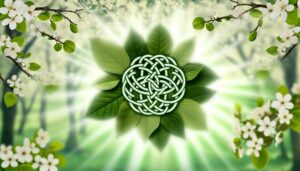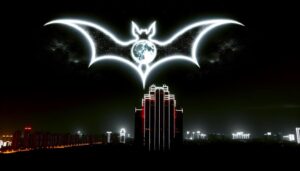Decoding the Owl – A Guide to Its Symbol in the Bible
In the Bible, the owl symbolizes desolation and judgment, frequently appearing in contexts of abandoned ruins and divine retribution. This imagery underscores the consequences of moral and spiritual decay.
Additionally, the owl is an emblem of solitude, reflecting themes of isolation and introspection. In prophetic literature, it serves as a harbinger of doom and representative of divine wisdom and hidden knowledge.
The Psalms highlight the owl's association with loneliness and emotional suffering. Understanding these themes offers deeper insights into biblical narratives and their portrayal of divine messages and human experiences.
Further inquiry reveals the owl's layered significance across various texts.
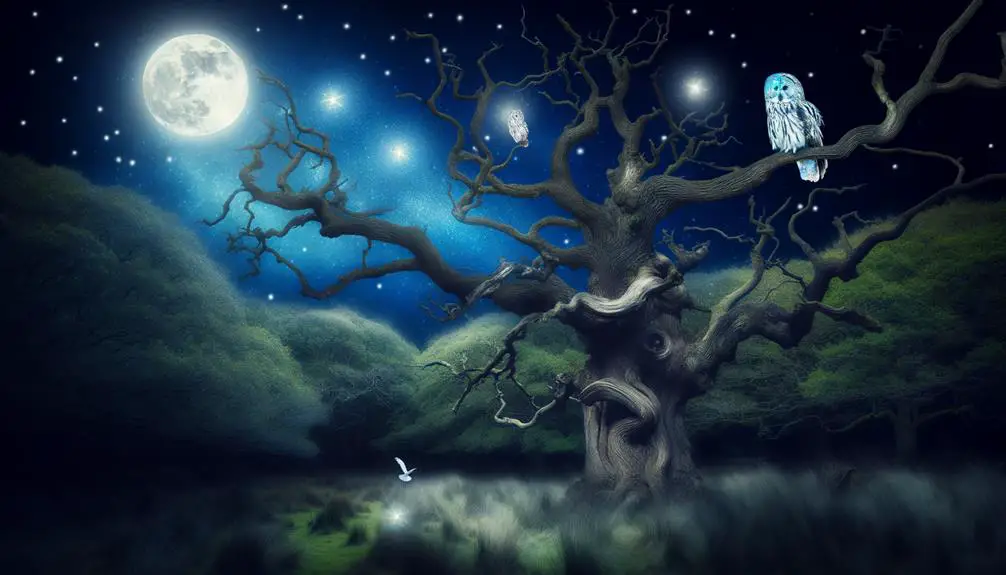
Key Takeaways
- The owl symbolizes desolation and abandonment, often associated with ruins and deserted places.
- It represents the consequences of moral and spiritual decay, illustrating divine wrath.
- The owl is a symbol of solitude, reflecting isolation and introspection.
- In prophetic imagery, the owl signifies divine wisdom and impending judgment.
- The owl embodies wisdom and mystery, inviting reflection on spiritual insight and hidden knowledge.
Owl in Biblical Texts
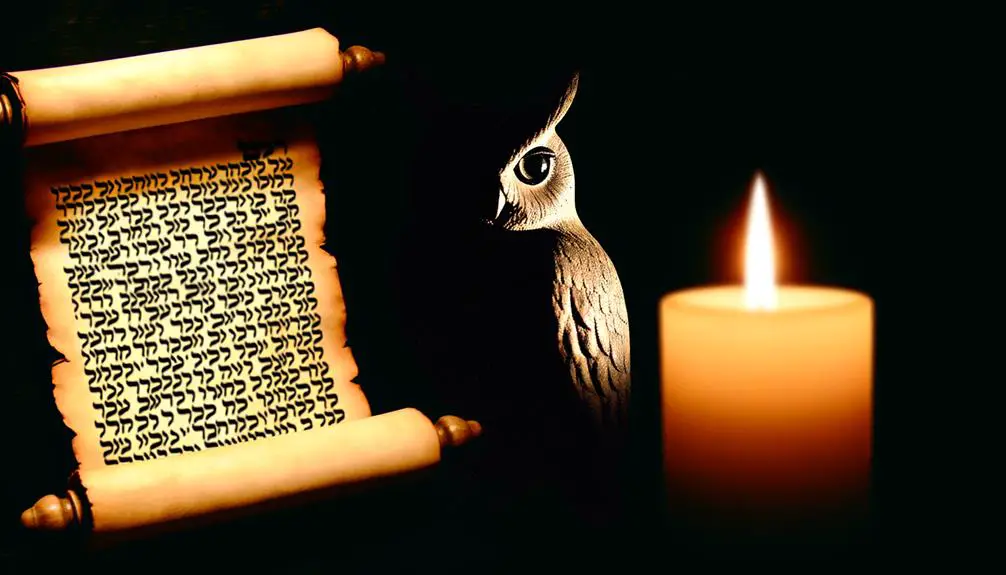
In the biblical texts, the owl is often depicted as a symbol of desolation and abandonment, reflecting the creature's association with ruins and deserted places. This symbolism is evident in passages such as Isaiah 34:11 and Jeremiah 50:39, where the owl inhabits forsaken lands, underscoring its connection to solitude.
The Hebrew word for owl, 'yanshuph,' appears in contexts that emphasize wilderness and decay. This avian imagery serves to highlight the owl's role as a harbinger of desolate landscapes, reinforcing themes of divine judgment and societal collapse.
Therefore, the owl's presence in scripture is not merely about the bird itself but about its broader metaphorical implications within the narrative framework of biblical literature.
Desolation and Judgment
As a symbol of desolation and judgment, the owl in biblical literature underscores profound themes of divine retribution and the inevitable consequences of moral and spiritual decay.
Frequently mentioned in prophetic texts such as Isaiah 34:11 and Jeremiah 50:39, the owl inhabits ruined cities and desolate places, serving as a stark reminder of God's judgment upon nations that have forsaken His commandments.
This image of the owl amidst barren landscapes vividly illustrates the aftermath of divine wrath—where once-thriving communities lie in ruins, inhabited only by creatures of the night.
Therefore, the owl symbolizes not merely physical desolation but also a deeper, spiritual void, reflecting the severance of divine favor and the resultant chaos and abandonment.
Symbol of Solitude

Often depicted as a solitary creature, the owl in biblical texts evokes themes of isolation and introspection, inviting readers to contemplate periods of personal and spiritual withdrawal. This symbolism is frequently employed to reflect moments of profound solitude where individuals seek deeper understanding or divine guidance.
In the context of biblical narratives, the owl's solitary nature serves as a metaphor for the human experience of being alone with one's thoughts, removed from societal distractions. This imagery underscores the significance of solitude in spiritual development, suggesting that retreat and reflection are essential for personal growth.
Owl in Psalms
The Psalms, rich with vivid imagery and metaphor, frequently invoke the owl to represent desolation and lamentation.
In Psalm 102:6, the psalmist states, 'I am like an owl of the waste places,' employing the owl as a symbol of profound loneliness and abandonment.
This depiction aligns with the broader biblical context, where owls are often associated with forsaken and desolate locations.
The owl's nocturnal nature further accentuates a sense of darkness and despair, underscoring the emotional depth of the psalmist's suffering.
Prophetic Imagery

Within the context of prophetic imagery in the Bible, the owl frequently emerges as a symbol embodying divine wisdom and insight, often serving as a vehicle for conveying deeper spiritual truths.
Concurrently, its presence is also linked to omens and warnings, suggesting impending judgment or desolation. This duality underscores the owl's complex role in biblical narratives, blending themes of enlightenment with those of forewarning.
Divine Wisdom Representation
In biblical literature, the owl frequently serves as a symbol of divine wisdom, particularly within the context of prophetic imagery. This association arises from the owl's nocturnal nature and its capacity to perceive what remains hidden in darkness, symbolizing a deeper, spiritual insight. Scriptural references, such as in Isaiah 34:11, depict owls dwelling in desolate places, where profound truths often emerge in solitude.
Additionally, the owl's keen vision in the night metaphorically aligns with the prophets' role in discerning divine messages amidst the moral and spiritual obscurity of their times. By embodying wisdom that transcends human limitations, the owl in the Bible underscores the necessity of divine guidance and the revelatory process inherent in prophetic discourse.
Omens and Warnings
Biblical texts frequently employ the owl as an omen, leveraging its haunting presence in desolate landscapes to signify impending judgment or divine retribution.
The owl's association with ruins and abandonment, as seen in passages like Isaiah 34:11 and Jeremiah 50:39, underscores its role as a harbinger of desolation.
These contexts, rich in prophetic imagery, evoke the stark consequences of turning away from divine commandments.
The owl, as a result, emerges not merely as a creature of the night but as an instrument of divine warning.
Such imagery serves to alert the faithful to the ramifications of moral and spiritual decay, urging a return to righteousness in order to avert divine displeasure and the resulting desolation.
Representations in Isaiah
In the Book of Isaiah, the owl emerges as a potent symbol within prophetic imagery, often associated with desolation and divine judgment. By exploring the symbolic meanings attributed to the owl, one gains insight into its role as an emblem of abandonment and ruin in a biblical context.
Detailed analysis of these references within Isaiah elucidates the broader theological and moral messages conveyed through this avian symbol.
Prophetic Imagery Analysis
Isaiah's prophetic imagery employs the owl as a symbol of desolation and abandonment, reflecting the broader themes of judgment and exile within the text. This is particularly evident in Isaiah 34:11, where owls inhabit the desolated land of Edom, signifying its complete destruction and divine judgment.
The owl, a nocturnal creature, embodies the eerie silence and lifelessness that follow divine retribution. In addition, the presence of the owl in these passages underscores the irrevocable nature of the judgment pronounced by God, as the land is rendered uninhabitable and forsaken.
This use of the owl amplifies the ominous tone of Isaiah's prophecies, emphasizing the severe consequences of disobedience and the inescapable reality of divine justice.
Symbolic Meanings Explored
The symbolic significance of the owl in Isaiah extends beyond its immediate prophetic context to encompass broader themes of desolation, judgment, and the consequences of divine wrath.
In Isaiah 13:21, the owl inhabits the ruins of Babylon, serving as a harbinger of desolation. This imagery underscores the totality of divine judgment, transforming a once-thriving city into a habitation for creatures of the night.
The owl's nocturnal nature further accentuates the themes of darkness and abandonment, reflecting the spiritual and moral decay that invites divine retribution.
Therefore, the owl in Isaiah is not merely a bird but an emblematic representation of the profound desolation and irrevocable consequences that follow divine judgment upon a nation.
Contextual Biblical References
Examining the contextual biblical references in Isaiah reveals how the owl's presence in prophetic literature symbolizes desolation and divine judgment. In Isaiah 13:21 and 34:11, the owl is depicted inhabiting desolate ruins, emphasizing the aftermath of divine retribution. These passages serve as poignant reminders of impending judgment and desolation that follow disobedience to God.
- Isaiah 13:21: Describes owls dwelling in the fallen Babylon, symbolizing utter desolation.
- Isaiah 34:11: Portrays owls occupying Edom, denoting divine wrath and abandonment.
- Symbolic Role: The owl signifies the presence of unclean spirits inhabiting forsaken places.
- Prophetic Imagery: Utilizes the owl to forewarn nations of the consequences of their iniquities.
Such references enhance our understanding of prophetic symbolism and theological implications.
Wisdom and Mystery
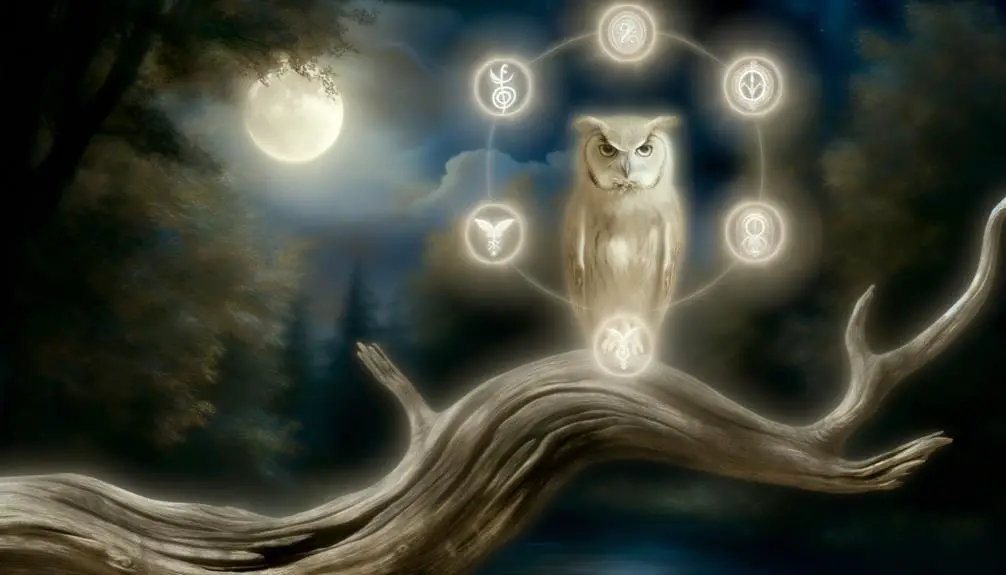
Within the biblical context, the owl often emerges as a symbol intertwining themes of wisdom and mystery, reflective of its nocturnal nature and solitary demeanor.
The owl's ability to navigate the darkness is emblematic of discernment, suggesting a profound understanding beyond superficial appearances. This perception is augmented by its silent flight, which metaphorically aligns with the concept of divine wisdom that operates subtly and quietly within the human psyche.
Moreover, the owl's elusive presence contributes to its association with mystery, evoking a sense of the unknown or hidden knowledge. By embodying these dual aspects, the owl in the Bible serves as a potent symbol that transcends its mere physical attributes, inviting deeper reflection on spiritual insight and the enigmatic facets of divine wisdom.
Cultural Interpretations
Although the owl's symbolism in the Bible is rich with themes of wisdom and mystery, its cultural interpretations across different societies further expand its multifaceted significance.
Various cultures imbue the owl with unique meanings that reflect their worldviews and traditions.
- In Ancient Greece, the owl was associated with Athena, the goddess of wisdom and war.
- Native American cultures often view the owl as a protector and bearer of sacred knowledge.
- In some African traditions, owls are considered messengers between the physical and spiritual domains.
- In medieval European folklore, owls were sometimes seen as omens of death or misfortune.
Such cultural interpretations underscore the owl's pervasive influence and its capacity to embody diverse, profound significations beyond the biblical context.
Modern Symbolism
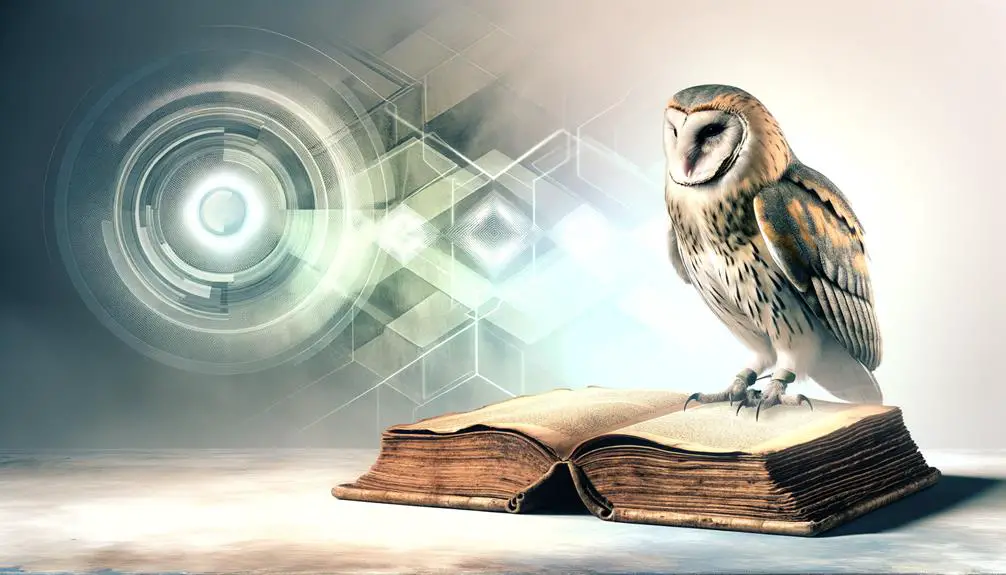
Building upon these rich cultural interpretations, modern symbolism of the owl continues to evolve, reflecting contemporary values and societal shifts.
In today's context, owls are often emblematic of wisdom and knowledge, resonating with the ancient Greek association with Athena, the goddess of wisdom.
Additionally, the owl's nocturnal nature lends it a mystical quality, symbolizing introspection and the revelation of hidden truths.
Contemporary media and literature frequently depict owls as guardians of the unknown, further solidifying their role as symbols of insight and mystery.
Additionally, environmental movements adopt the owl as a representation of endangered species, highlighting the creature's ecological significance and the urgent need for conservation.
Therefore, the owl remains a dynamic symbol, continually adapting to modern narratives.
Conclusion
The owl, a creature steeped in the nocturnal mystique, serves as a multi-faceted symbol within the biblical canon. From connotations of desolation and judgment to representations of solitude and wisdom, this avian figure flits through the Psalms and prophetic texts with an air of enigmatic authority.
As a cultural artifact, the owl's symbolism has evolved, yet its biblical roots remain a compelling study in contrasts and complexities, rendering it a subject worthy of continued scholarly examination.

